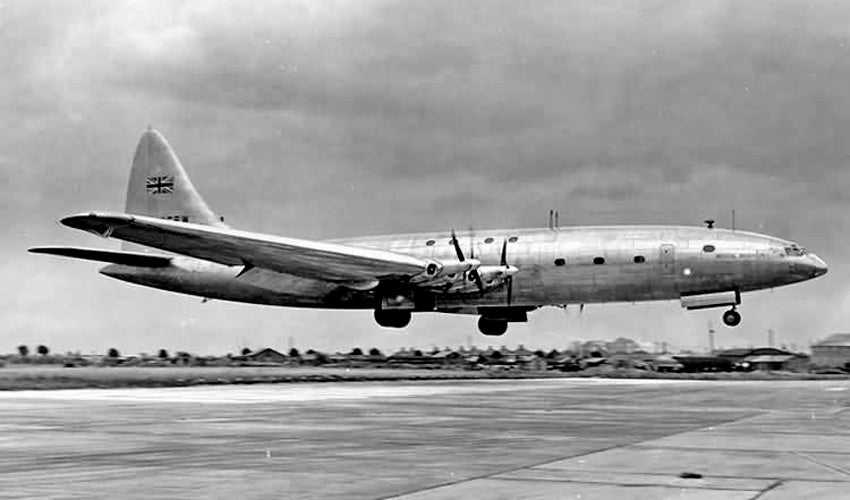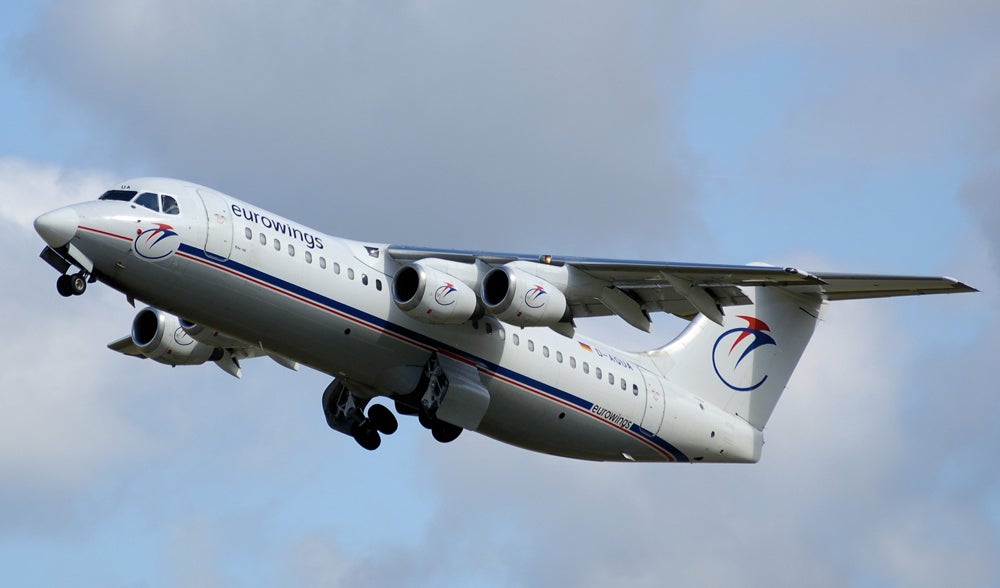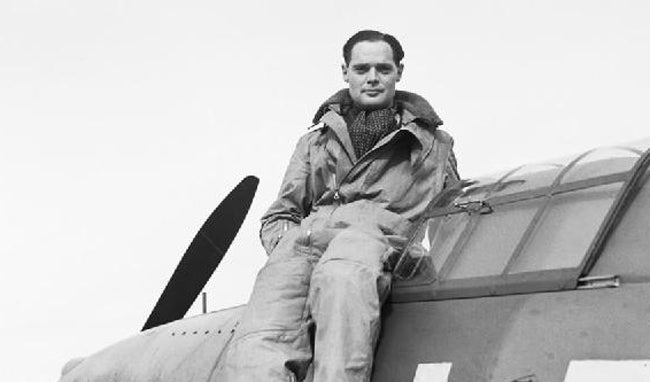 "ttyymmnn" (ttyymmnn)
"ttyymmnn" (ttyymmnn)
09/06/2016 at 12:35 • Filed to: Planelopnik, planelopnik history
 8
8
 9
9
 "ttyymmnn" (ttyymmnn)
"ttyymmnn" (ttyymmnn)
09/06/2016 at 12:35 • Filed to: Planelopnik, planelopnik history |  8 8
|  9 9 |
Welcome to This Date in Aviation History , getting of you caught up on milestones, important historical events and people in aviation from September 3 through September 6.
!!! UNKNOWN CONTENT TYPE !!!

September 4, 1949 – The first flight of the Bristol Brabazon. Generally, history remembers the great planes, the ones that broke records, helped win wars, or made the world a smaller place. But oftentimes, the failures can be as interesting as the successes. Planes like the !!!error: Indecipherable SUB-paragraph formatting!!! , better known as the Spruce Goose , may not have been commercially viable, but their story is one that is worth telling, an example of thinking on a grand scale that was every bit as impressive as it was impractical, much in the same was as the enormous yet anachronistic Bristol Brabazon. During WWII, the British government made an agreement with the United States whereby England would focus their efforts on the development of bombers and other military aircraft while depending on the US to provide them with transport aircraft. By the middle of the war, the British government faced the unfortunate situation of having no significant transport aircraft under development to fly passengers after the war. In fact, many of the first postwar airliners were converted bombers such as the !!!error: Indecipherable SUB-paragraph formatting!!! , which was developed from the !!!error: Indecipherable SUB-paragraph formatting!!! strategic bomber. In 1943, the !!!error: Indecipherable SUB-paragraph formatting!!! , led by !!!error: Indecipherable SUB-paragraph formatting!!! , was assembled to address the vacuum in British aircraft design left by the absence of passenger aircraft. They set to work identifying and categorizing England’s postwar aviation needs, and the report filed by the committee settled on four different types of aircraft of production. The biggest of the four was the Type I, a large, transatlantic airliner intended to serve the routes between London and New York, a 12-hour flight. Bristol had already been working on a large “100 ton bomber,” one that would find its closest parallel in the American !!!error: Indecipherable SUB-paragraph formatting!!! , but development was halted when such a large bomber was deemed unnecessary. So, when the call came for a large airliner, Bristol returned to the huge bomber and developed it into the Brabazon. The Brabazon featured four counter-rotating propellers, but where many aircraft of this design use one engine to turn both propellers, the used two. The Brabazon was powered by a total of eight !!!error: Indecipherable SUB-paragraph formatting!!! 18-cylinder engines, each providing over 3,000 horsepower. Cruising speed was 250 mph, and the range was 5,500 miles flying at 25,000 feet. And while the enormity of the Brabazon, almost as large as a modern !!!error: Indecipherable SUB-paragraph formatting!!! , would lead one to believe it could carry hundreds of passengers, the airliner only accommodated 100 passengers. Instead of row upon row of seats, the Brabazon had sleeping berths, a galley, a 32-seat dining cabin and a lounge with a bar.

Bristol hoped that such an arrangement would appeal to big money travelers who could afford such accommodations. But carrying so few passengers in such grand style hearkened back to transcontinental train travel, and was not appropriate for the burgeoning passenger market, where making money meant carrying more and more passengers. One protoype was constructed, but the airlines had no stomach for such a large, expensive airplane that would carry so few passengers. After millions of pounds were spent in development, the Brabazon was canceled in 1953. While the Brabazon itself was deemed a failure, Bristol benefited from what it learned building the large airliner, knowledge that they put to use developing the more traditional (and more successful)
!!!error: Indecipherable SUB-paragraph formatting!!!
, which first flew in 1952, and the British aviation industry as a whole benefited from the increase in manufacturing infrastructure and techonological development that went along with the Brabazon and the rest of the work of the Brabazon Committee. Following its cancellation, the single Brabazon was broken up for scrap, along with the second prototype, and the Brabazon was relegated to relative obscurity.
(Photo author unknown)
!!! UNKNOWN CONTENT TYPE !!!
Short Takeoff
!!! UNKNOWN CONTENT TYPE !!!

September 3, 1982 – The first flight of the Beechcraft 1900, a 19-passenger twin-turboprop regional airliner and one of the most popular small airliners ever produced. The 1900 was developed from the !!!error: Indecipherable SUB-paragraph formatting!!! and designed with all-weather flight capabilities, as well as the ability to operate from short runways. Power comes from a pair of !!!error: Indecipherable SUB-paragraph formatting!!! turboprops which give the 1900 a top speed of 518 mph. When production ended in 2002, Beechcraft had built nearly 700 aircraft, and it remains in service with over 80 civilian operators and numerous military operators, including the US Air Force, where it is known as the C-12J. (Photo by Juergen Lehle, AlbSpotter.eu, via !!!error: Indecipherable SUB-paragraph formatting!!! )
!!! UNKNOWN CONTENT TYPE !!!

September 3, 1981 – The first flight of the British Aerospace 146, a short-haul, regional airliner manufactured from 1978-2001 by British Aerospace. The 146 is powered by four !!!error: Indecipherable SUB-paragraph formatting!!! engines mounted on pods under a high cantilever wing, and has become very popular in use at city airports, where it takes advantage of its short-field performance and quiet operation. The 146 can carry from 82-112 passengers, and entered service in 1983. Nearly 400 copies of the 146 were produced, and it continues to serve worldwide as an airliner and cargo aircraft, including some that have been converted for aerial firefighting duties. (Photo by Arpingstone via !!!error: Indecipherable SUB-paragraph formatting!!! )
!!! UNKNOWN CONTENT TYPE !!!

September 3, 1948 – The loss of Silverplate Boeing B-29 Superfortress The Great Artiste . The two !!!error: Indecipherable SUB-paragraph formatting!!! !!!error: Indecipherable SUB-paragraph formatting!!! that dropped an atomic bomb on Hiroshima and Nagasaki, the !!!error: Indecipherable SUB-paragraph formatting!!! and !!!error: Indecipherable SUB-paragraph formatting!!! , are well known to history. But they weren’t the only planes to make those historic flights. On each occasion, they were accompanied by two other Silverplate B-29s, one with photographers and the other with measuring instruments. The Great Artiste (44-27353) was the only B-29 to fly on both atomic raids. Built at the Glenn L. Martin Plant, The Great Artiste flew conventional bombing missions before the nuclear raids of August 1945, but during a polar navigation training mission after the war, it developed engine trouble after takeoff from Goose Bay, Labrador and overran the runway on landing and was seriously damaged. Despite its historical significance, The Great Artiste was scrapped in 1949. (Photo author unknown)
!!! UNKNOWN CONTENT TYPE !!!

September 4, 1957 – The first flight of the Lockheed JetStar, the first dedicated business jet to enter service and, with accommodations for up to ten passengers, the largest in its class. Unlike most !!!error: Indecipherable SUB-paragraph formatting!!! of the era, the JetStar had four engines rather than two. Originally powered by four !!!error: Indecipherable SUB-paragraph formatting!!! turbojets, later production aircraft received quieter, more fuel-efficient !!!error: Indecipherable SUB-paragraph formatting!!! turbofan engines that gave it a top speed of 547 mph. Not only did it serve as !!!error: Indecipherable SUB-paragraph formatting!!! personal jet, the JetStar entered US military service as the C-140 and also served as President !!!error: Indecipherable SUB-paragraph formatting!!! personal aircraft, which he nicknamed Air Force One-Half. Just over 200 were produced from 1957-1978. (Photo by Shahram Sharifi via !!!error: Indecipherable SUB-paragraph formatting!!! )
!!! UNKNOWN CONTENT TYPE !!!

September 4-5, 1936 – Beryl Markham becomes the first woman to make a solo crossing of the Atlantic Ocean from east to west. Born in England, Markham became one of the first African bush pilots, flying as a game spotter for hunters on safari. Her transatlantic crossing was planned from Dublin to New York City, but poor weather forced her down in New Brunswick, Canada. Still, she completed the crossing, which is more difficult than going eastward since the pilot has to fly against the prevailing winds. Markham’s memoir West with the Night chronicles this flight, as well as other flying adventures she undertook. Markham died in 1986 at age 83. (Photo author unknown)
!!! UNKNOWN CONTENT TYPE !!!

September 4, 1933 – The death of Florence Gunderson Klingensmith, an American aviatrix active during the Golden Age of Aviation, and one of the first to participate in air races with male pilots. Klingensmith became interested in aviation after !!!error: Indecipherable SUB-paragraph formatting!!! visited her hometown of Fargo, North Dakota, and she began her flying career as a skydiver in exchange for flying lessons. She got her first airplane by going door to door to solicit funds, and in 1931 she set a world record by completing 1,078 loops. Taking up air racing, she was the first woman to enter the Frank Phillips Trophy Race in 1933, flying a !!!error: Indecipherable SUB-paragraph formatting!!! . While flying in fourth place at over 200 mph, the airplane began to disintegrate, and Klingensmith was killed while attempting to bail out. Her death led to a ban on women participating in air races. Klingensmith was 29 years old. (Photo author unknown)
!!! UNKNOWN CONTENT TYPE !!!

September 5, 1982 – The death of Douglas Bader, an RAF fighter ace during WWII who was credited with 22 confirmed kills, four shared victories and 11 damaged enemy aircraft. In 1931, Bader lost both legs in an aerobatic crash, but after his recovery, he rejoined the RAF after the start of WWII. Bader scored victories in the air over Dunkirk and took part in the !!!error: Indecipherable SUB-paragraph formatting!!! . In August of 1941, Bader bailed out of his stricken fighter over France and was captured, but despite of his disability, he made so many escape attempts that his jailers threatened to confiscate his prosthetic legs. He was then held at !!!error: Indecipherable SUB-paragraph formatting!!! , where he remained imprisoned until the end of the war. Following the war, Bader continued flying until poor health forced him to quit in 1979. For his war service, Bader was awarded the !!!error: Indecipherable SUB-paragraph formatting!!! , the !!!error: Indecipherable SUB-paragraph formatting!!! and !!!error: Indecipherable SUB-paragraph formatting!!! . (Imperial War Museum photo)
!!! UNKNOWN CONTENT TYPE !!!

September 6, 1893 – The birth of Claire Chennault. Chennault was born in Commerce, Texas, and became a pilot during WWI after a stint as a school principal. A proponent of the pursuit fighter in the 1930s at a time when the US Army was focusing on bombers, Chennault left the Army in 1937 and worked as an aviation advisor to the Chinese government, becoming the head of the 1st American Volunteer Group, better known as the !!!error: Indecipherable SUB-paragraph formatting!!! , in 1941. Chennault led the group, as well as the uniformed US Army Air Forces units that followed the disbandment of the AVG, but openly feuded with General !!!error: Indecipherable SUB-paragraph formatting!!! , the US Army commander in China. Stilwell wanted Chennault’s forces to support ground supply routes into China, while Chennault advocated bombing Japanese targets in support of Chinese Nationalist forces. Following the war, Chennault created the !!!error: Indecipherable SUB-paragraph formatting!!! , later known as !!!error: Indecipherable SUB-paragraph formatting!!! , to support the Nationalist fight against Communist China. Chennault died in 1958 at age 64. (US Army photos)
!!! UNKNOWN CONTENT TYPE !!!
Recent Aviation History Posts
!!! UNKNOWN CONTENT TYPE !!!
!!! UNKNOWN CONTENT TYPE !!!
!!! UNKNOWN CONTENT TYPE !!!
!!! UNKNOWN CONTENT TYPE !!!
If you enjoy these Aviation History posts, please let me know in the comments. And if you missed any of the past articles, you can find them all at
!!!error: Indecipherable SUB-paragraph formatting!!!
.
!!! UNKNOWN CONTENT TYPE !!!
 HammerheadFistpunch
> ttyymmnn
HammerheadFistpunch
> ttyymmnn
09/06/2016 at 12:47 |
|

The C-12N, the flying version of “yes please” at the pep boys “accessorise” isle.
 just-a-scratch
> HammerheadFistpunch
just-a-scratch
> HammerheadFistpunch
09/06/2016 at 13:41 |
|
It looks like some of the recent F1 entrants to me.
 HammerheadFistpunch
> just-a-scratch
HammerheadFistpunch
> just-a-scratch
09/06/2016 at 13:43 |
|
dat down...er...upforce!
 The Lurktastic Opponaught
> ttyymmnn
The Lurktastic Opponaught
> ttyymmnn
09/06/2016 at 14:01 |
|
Thanks for doing these history posts. It gives me hope that I’ll someday be able to pursue a second career in the aviation industry.
 MonkeePuzzle
> ttyymmnn
MonkeePuzzle
> ttyymmnn
09/06/2016 at 14:15 |
|
the Brabazon had sleeping berths, a galley, a 32-seat dining cabin and a lounge with a bar.
ambitious!
 ttyymmnn
> MonkeePuzzle
ttyymmnn
> MonkeePuzzle
09/06/2016 at 14:31 |
|
And backward thinking, though not all that far off from our modern first class on flights that cover half the globe. Spare a thought for all those poor souls stuck in steerage.
 ttyymmnn
> The Lurktastic Opponaught
ttyymmnn
> The Lurktastic Opponaught
09/06/2016 at 14:37 |
|
Thanks for reading! I assure you it’s a labor of love. And good luck with your second career. I read an interview a couple of weeks ago with Mike Rowe, the guy who hosted Dirty Jobs . He was an aspiring opera singer before his TV gig, and he said, “Never follow your passion, but always bring it with you.” As a frustrated historian/cartographer who became a professional musician because it was all he could do and the opportunity presented itself, I know exactly what he means.
 ttyymmnn
> The Lurktastic Opponaught
ttyymmnn
> The Lurktastic Opponaught
09/06/2016 at 14:50 |
|
I will also add that, among my musical pursuits, I have also done a whole lot of teaching. I applied, and was interviewed, for a few college jobs, and while I didn’t get them (I’m glad now that I didn’t), they always asked me in the interview, “Why do you want this job?” And my replay was always, “When I look back at my life, and my career in music to this point, I can identify mentors, teachers, and performers about whom I can honestly say, ‘If it weren’t for that person, I wouldn’t be here today.’ If I can finish my career and have just one person say, ‘If it weren’t for Ttyymmnn, I wouldn’t be here today,’ then my career will have been worth it.” Those people weren’t always musicians. One was my junior high school Latin teacher. So, if by sitting here and writing about the history of aviation I can inspire somebody to greater things, then my work will have more meaning than a mere recitation of history. Best of luck to you.
 The Lurktastic Opponaught
> ttyymmnn
The Lurktastic Opponaught
> ttyymmnn
09/06/2016 at 15:08 |
|
Thanks. That’s a succinct summation of the defining moments of my scientific career to date. Without those few individuals, I’m not sure where I’d be today. Those interactions would appear to transcend fields of study.